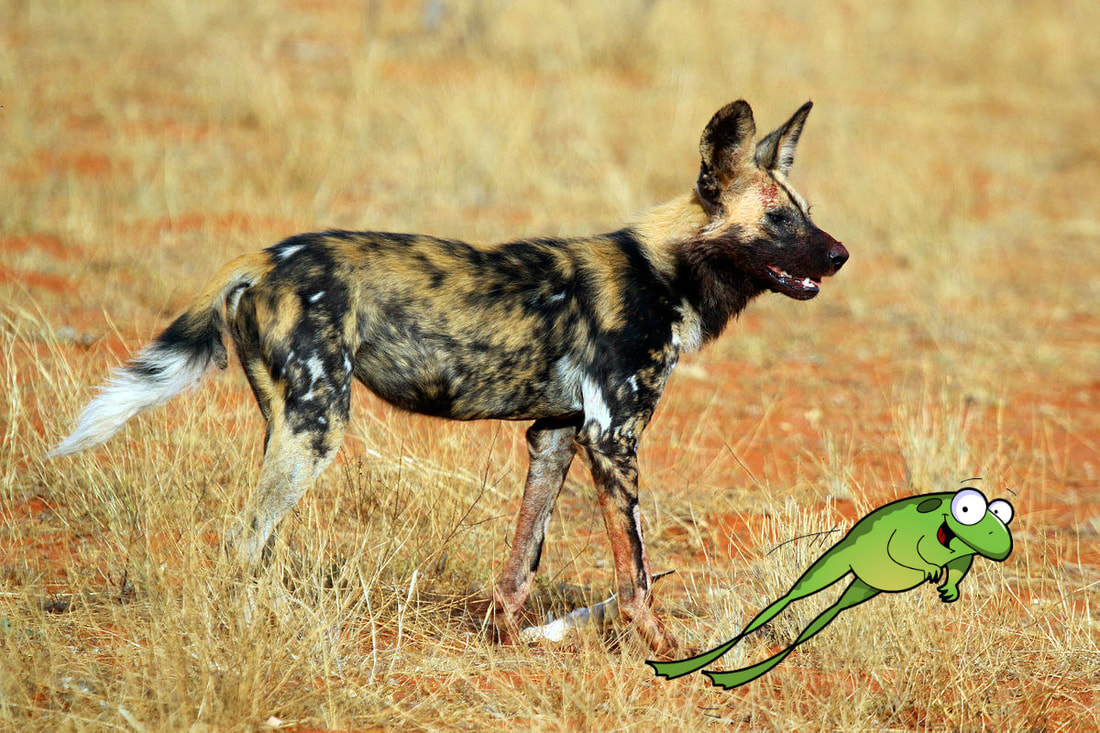The African wild dog is also known as the African painted dog. This fiercely predatory species can be found living in the dense forests of sub-Sahara Africa. The animal's coat is mottled, giving it a splatter-paint look. They have long legs and huge, rounded ears. Their fur in texture, is stiff an course, resembling bristles on a brush. They have no undercoat. Like many dogs, they communicate vocally but these guys lack facial expressions and the body language you typically see in most dogs.
What I found most interesting about these critters is that they "sneeze" to vote on pack decisions. "The sneeze is a sharp exhalation through the nostrils that signals assent or agreement. When a pack gathers and the dominant mating pair sneeze, departure for hunting is likely. If a less dominant dog sneezes, hunting may occur if enough members of the group also sneeze." Or they could just have allergies. (Just kidding!)
Their diet consists of 70% meat. They can give chase to their prey for up to 60 minutes and can run at speeds of up to 66 kilometers...that's 41 miles per hour. No wonder they have such long legs! Wild dogs have strong social bonds and form permanent packs. Normally, only the dominant female and the dominant male breed, having only one litter of pups each year. But, those litters can have anywhere from 6 to 26 babies!
At one time, wild dogs roamed all of sub-Saharan Africa, except for the very driest parts. Now, most of the remaining dogs live in East and South Africa. As few as 6600 adults remain, divided into 39 subpopulations. This species is categorized as endangered. Most packs are widely separated from each other causing some of the declines in population. But disease and habitat destruction are also reasons why their numbers are shrinking.
Just in case you're thinking these critters might make a good addition to your family. You might want to reconsider adopting one. They cannot be domesticated.
I hope you enjoyed learning about these fascinating animals as much as I have. They are another example of one of Earth's animal residents that we will lose if something isn't done to protect them.
I invite you back again tomorrow for another informative and interesting (I hope) blog. Until then, I wish everyone a day filled with kindness and
PEACE.

 RSS Feed
RSS Feed